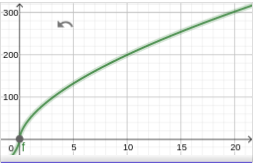True or false.
-
When we raise a power to a power, we multiply the exponents; in symbols\begin{equation*} \begin{gathered} (a^m)^n = a^{mn} \end{gathered} \end{equation*}
- True
- False
- \(\dfrac{4}{3} = 4\left(\dfrac{1}{3}\right)\text{,}\) and in general \(\dfrac{p}{q} = p\left(\dfrac{1}{q}\right)\text{.}\)
- True
- False
- To compute \((25^{1/2})^3\text{,}\) we first take the square root of 25, then cube the result.
- True
- False
- The notation \(16^{3/4}\) means to multipy 16 by \(\dfrac{3}{4}\text{.}\)
- True
- False
Answer 1.
\(\text{True}\)
Answer 2.
\(\text{True}\)
Answer 3.
\(\text{True}\)
Answer 4.
\(\text{False}\)
Solution.
- True
- True
- True
- False





